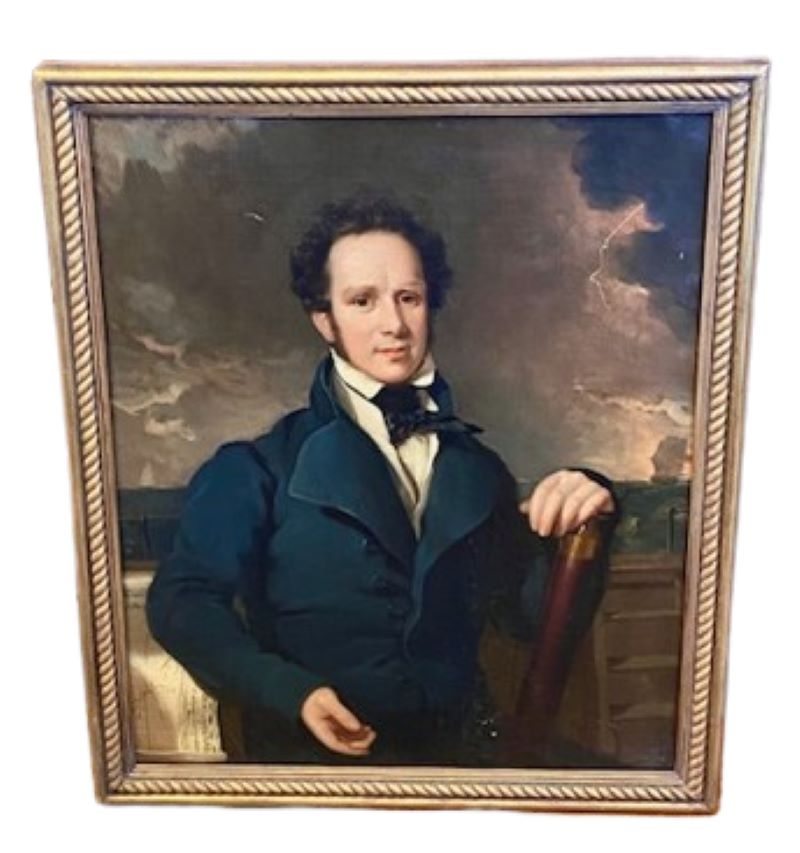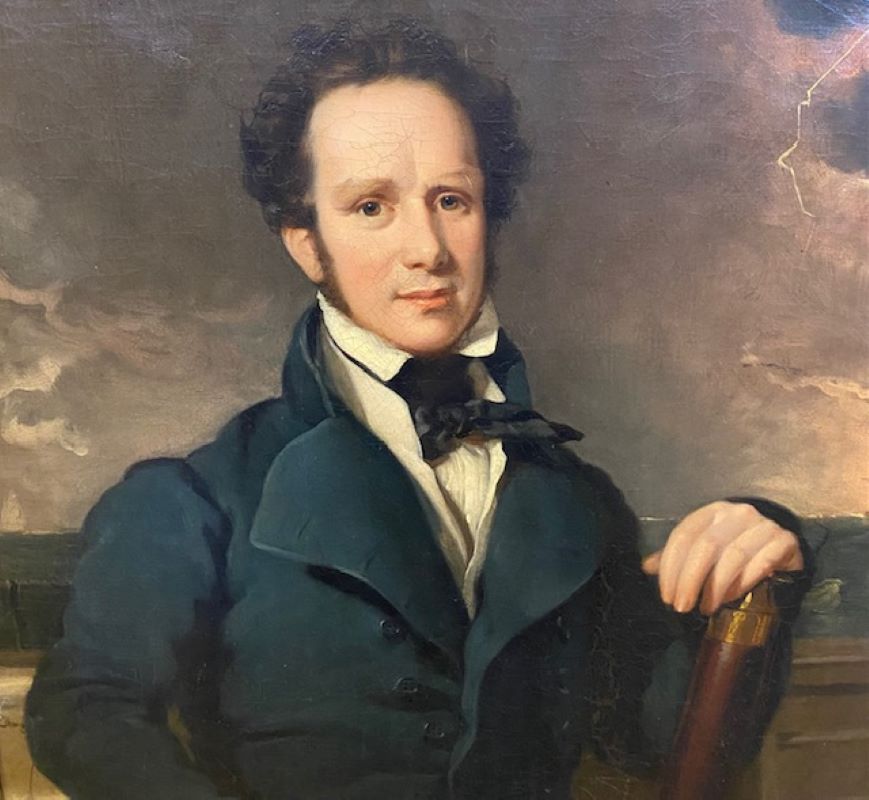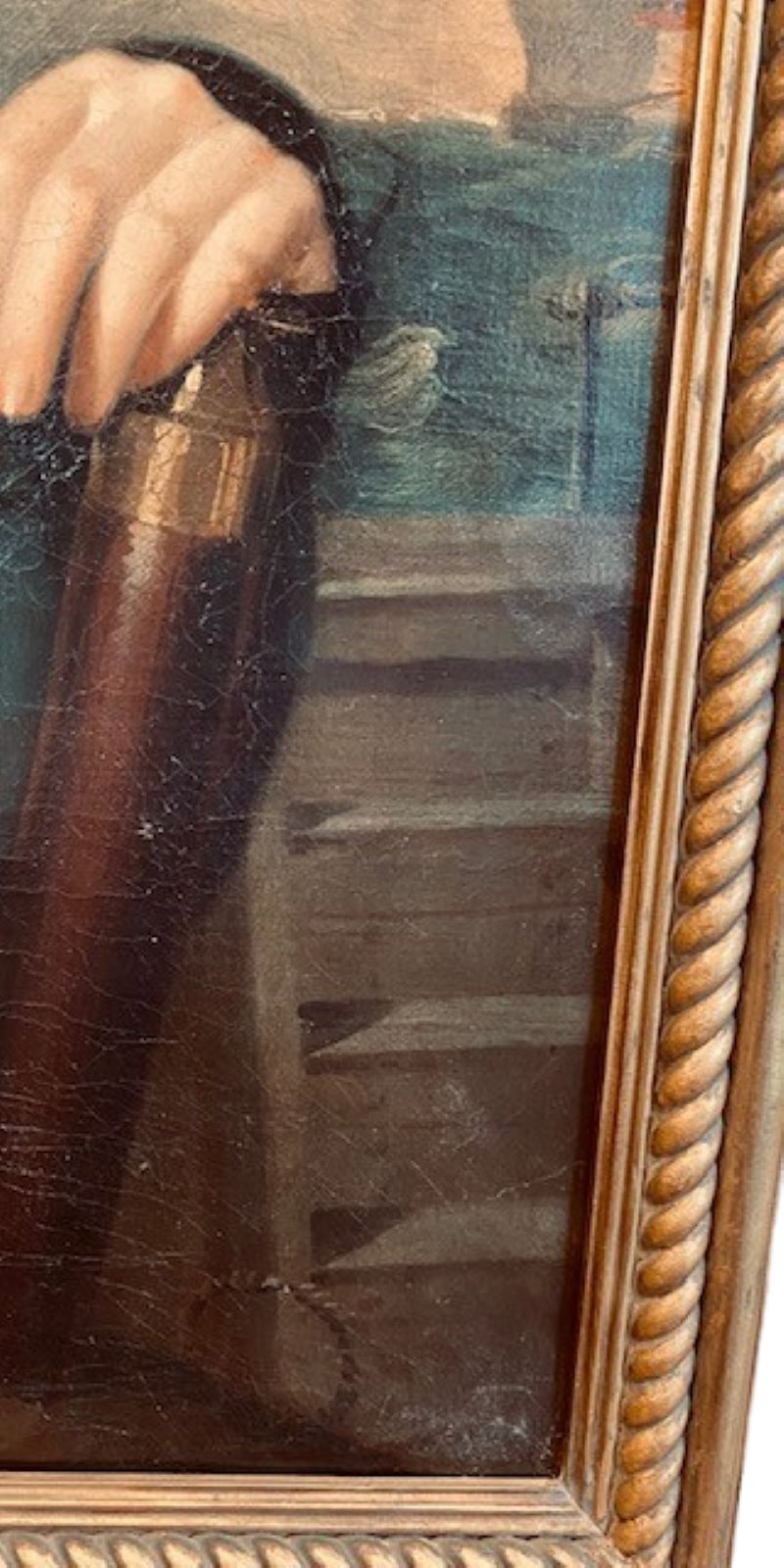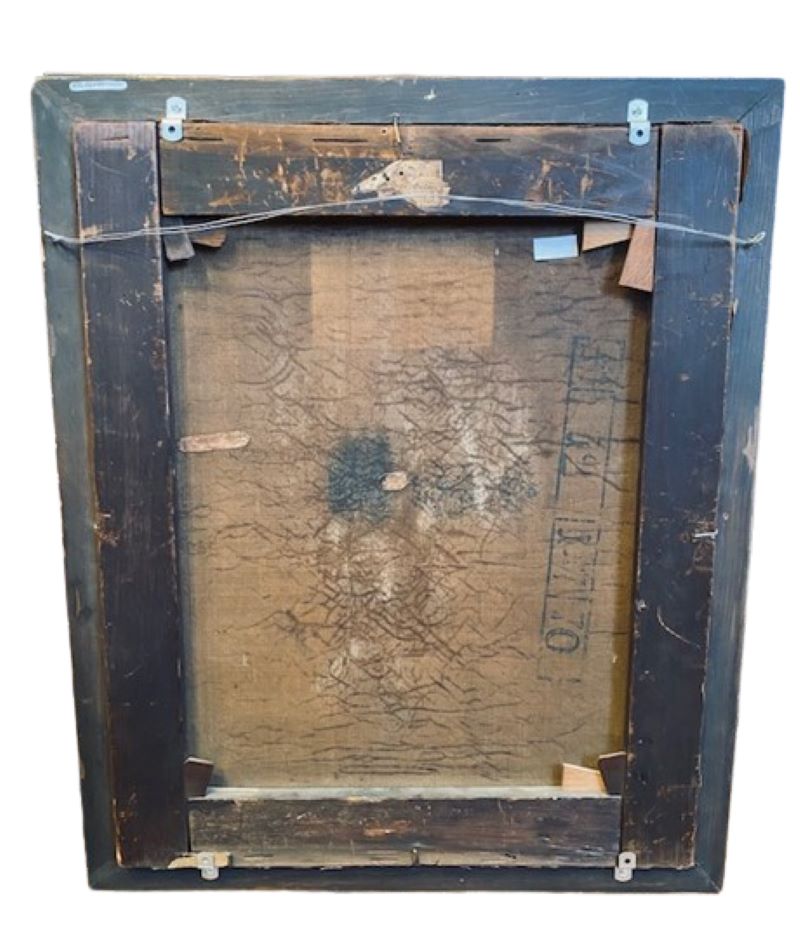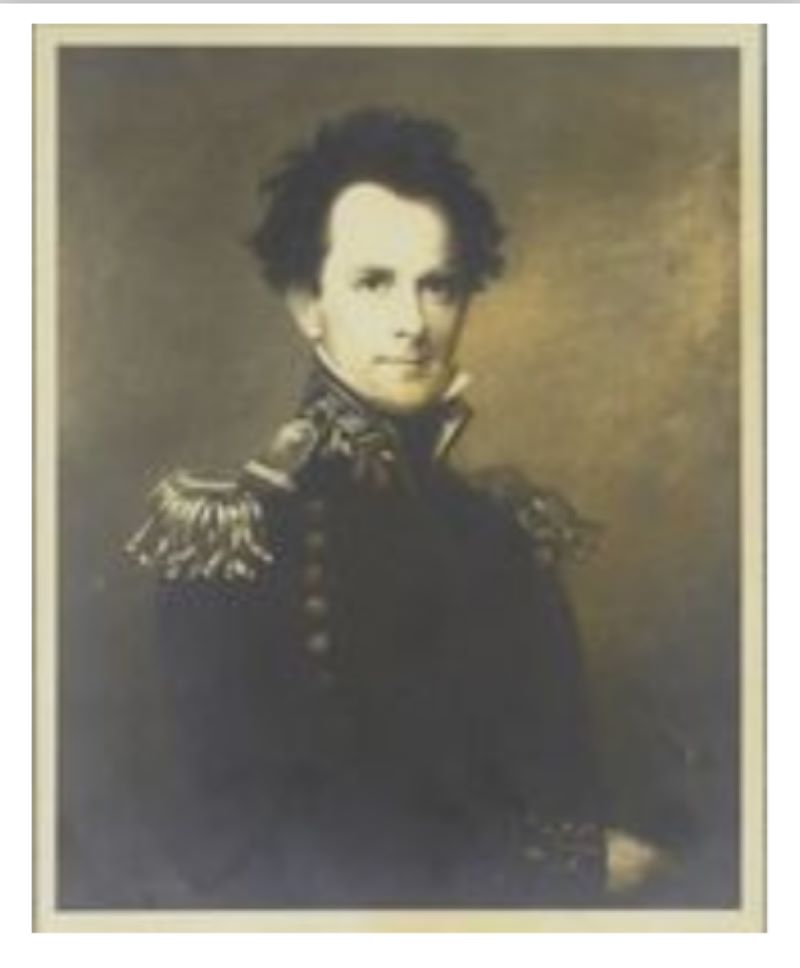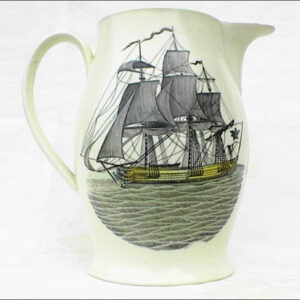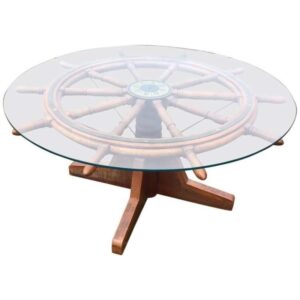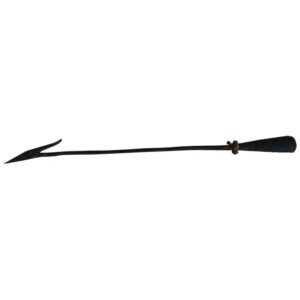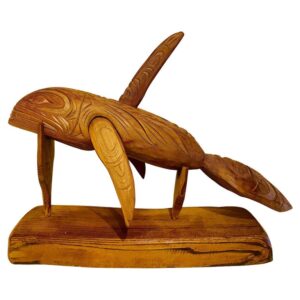Early 19th Century Portrait of U.S. Naval Captain William Compton Bolton (1799 – 1849)
Early 19th Century Portrait of U.S. Naval Captain William Compton Bolton (1799 – 1849)
$7,800.00
Early 19th Century Portrait of Naval Captain William Compton Bolton (Anglo-American: 1799 – 1849), circa 1830s, an oil on canvas half-length portrait of a sea captain holding a spyglass and a navigational chart, leaning against the taffrail on the quarterdeck of his ship; there are other ships seen on the storm tossed sea in the background over each shoulder, beneath a very dramatic stormy sky with great bolt of lightening. There is a partial paper label from the period on the reverse inscribed “Bolton.”
In stock
Early 19th Century Portrait of Naval Captain William Compton Bolton (Anglo-American: 1799 – 1849), circa 1830s, an oil on canvas half-length portrait of a sea captain holding a spyglass and a navigational chart, leaning against the taffrail on the quarterdeck of his ship; there are other ships seen on the storm tossed sea in the background over each shoulder, beneath a very dramatic stormy sky with great bolt of lightening. There is a partial paper label from the period on the reverse inscribed “Bolton.”
William Compton Bolton was born William Bolton Finch in England and became an officer in the United States Navy during the early 19th century. He became a midshipman in 1806, made lieutenant in 1813 and posted as a captain in 1831. He served with distinction aboard the US frigate Essex during the War of 1812, as both a midshipman and lieutenant from 1812 to 1814. He commanded Vincennes in 1829 and 1830 during her first around-the-world voyage by a US Navy vessel. He commanded the Pensacola Navy Yard from 1836 to 1837, and was master of the Brandywine from 1839 to 1841. He was made commander of the Mediterranean Squadron in 1848, and then commander of the Africa Squadron, billeted to the sloop-of-war Jamestown in maneuvers off the Cape Verde islands, Madeira and the Mediterranean.
Oddly, he changed his name from Finch to Bolton in 1833, as did his sister Elizabeth at the same time. William died in 1849 in Genoa.
This portrait was likely commissioned either while commander of the Vincennes in 1829 or 1830, or when he was posted as a captain in 1831. The painting is in very good condition with strong, vibrant colors and stable surface. There is a light amount of pleasant craquelure. There are three patches to be seen on the reverse, two of which are very old. The tears they repaired are barely discernible on the front, and then only on close inspection. The final photograph provided is an image of another portrait of Captain Bolton found online (posted by a former librarian at the Library of Congress).
The frigate Essex was built in Salem, Massachusetts, in 1799, and the actions of the Essex, its crew, and Captain David Porter shine as examples of the importance of the newly developing U.S. Navy and placing it on the world stage. She became the first U.S. Navy warship to round the Cape of Good Hope to protect merchant ships in the East Indies during the quasi-war with France. During the First Barbary War (1801 – 1805) she protected American shipping in the Mediterranean. In the War of 1812 she captured HMS Alert and then became the first U.S. Navy warship to sail into the Pacific Ocean and achieved great success against the British whaling fleet. She was later trapped by the British in the neutral port of Valparaiso, Chile, and captured after a two and a half hour battle when attempting to escape.
Measures: 23-1/2 in H x 19-1/2 in W

